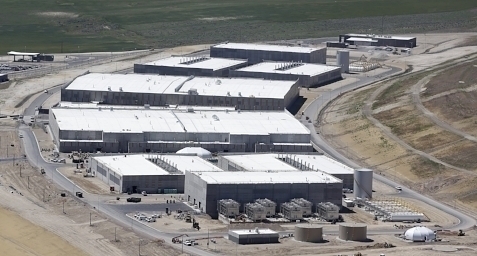Here Is a List of U.S. Federal Databases and How to Access Them

There are several databases across the United States. Just about every agency and form of law enforcement has their own internal database, of which members must log in. This information is then shared and cross-referenced to assist other agencies and even countries in gathering information on individuals. This is a list of the databases, ranging from local law enforcement to Homeland Security.
Central Data Exchange (CDX)
EPA’s Central Data Exchange (CDX) is one of the Agency’s electronic reporting sites. The Central Data Exchange is a central point which supplements EPA reporting systems by performing new and existing functions for receiving legally acceptable data in various formats, including consolidated and integrated data.
D.I.C.E.
This system contains information that is the property of the Drug Enforcement Administration.
E.P.I.C.
The EPIC Portal augments EPIC’s mission to support law enforcement and interdiction components through improved information sharing with the law enforcement community. It enables user access to EPIC through cutting edge web-based technology that facilitates both awareness and information sharing.
Hemisphere Project
The Hemisphere Project, also called simplyHemisphere, is a mass surveillance program conducted by US telephone company AT&T and paid for by the White House Office of National Drug Control Policy and the Drug Enforcement Administration.
ICReach
ICREACH is a top-secret surveillance-related search engine created by the United States National Security Agency after the September 11 attacks.
The existence of ICREACH became public through documents leaked by former NSA contractor Edward Snowden.
Classified documents published by news site The Intercept state that ICREACH is accessible to 23 government agencies, including the FBI, Drug Enforcement Administration, and the CIA, and was designed to store more than 850 billion records about phone calls, emails, cellphone locations, and text messages.
According to Ryan Gallagher, the reporter for The Intercept who revealed the ICREACH program, the data accessed through the system is “swept up and stored on this database en masse using this Reagan-era presidential order, which is called Executive Order 12333. And this thing is subject to no court oversight from the secret foreign intelligence court and minimal congressional scrutiny.”
L.E.E.P.
The Law Enforcement Enterprise Portal, or LEEP, is an electronic gateway that provides law enforcement agencies, intelligence partners, and criminal justice entities with centralized access to many different resources and services via a single sign-on. These resources strengthen case development for investigators and enhance information sharing between agencies.
Services on LEEP
Here are a few examples of the services on the LEEP:
Virtual Command Center/Special Interest Group
The Virtual Command Center/Special Interest Group (VCC/SIG) program is a secure, Internet-based information sharing system available to agencies around the world that are involved in law enforcement, first response, criminal justice, anti-terrorism, intelligence, and related matters. SIG and VCC members can access or share sensitive but unclassified information anytime and anywhere. Both services are available on the Law Enforcement Enterprise Portal to all LEEP users.
Below is a brief description of SIG and VCC services as well as other beneficial tools available within either service.
Special Interest Group: A controlled/structured-access area for departments such as task forces, cyber, drug enforcement, or other disciplines, to share and store information with law enforcement, intelligence and emergency management communities, as an endeavor to enhance collaboration with the law enforcement and intelligence communities to keep our nation safe. SIGs can be configured to provide users access to intelligence reports, specialized trainings, maps, photos, forums and databases. SIGs enable cross-border and multi-agency collaboration often allowing users to access information previously unavailable to them
Virtual Command Center: A real-time, collaborative tool that facilitates shared situational awareness and event/incident management. VCCs foster single and or multi-agency collaboration and allow users to share and report incidents, necessary intelligence resources—like suspect profiles, maps, and floor plans—and event schedules. VCCs—invaluable tools that have been successfully used in about 5,500 cases over the past decade—are ideal for:
Active shooter incidents
Child abductions
Presidential inaugurations
Takedown operations
Natural disasters
Special events
Terrorist attacks and threats
VCC Trax: An operational tool designed to display the information associated with multiple suspects, locations, or mass casualties. Users also have the ability to take and upload photographs into the Trax application—i.e., law enforcement personnel on surveillance might take a suspect photograph and then upload it directly into a Trax suspect box within seconds.
Active Shooter: An outgrowth of a White House initiative to assist law enforcement and first responders, the FBI Active Shooter Resources SIG contains valuable resources to aid in the management of the chaos often surrounding active shooter/multiple victim incidents.
National Data Exchange (N-DEx)
The N-DEx system provides criminal justice agencies with an online tool for sharing, searching, linking, and analyzing information across jurisdictional boundaries. A national repository of criminal justice records submitted by agencies from around the nation, N-DEx enables users to “connect the dots” between data on people, places, and things that may seem unrelated in order to link investigations and investigators.
Overview
The N-DEx system is an unclassified national information sharing system that enables criminal justice agencies to search, link, analyze, and share local, state, tribal, and federal records. N-DEx is also a strategic investigative information sharing system that fills informational gaps and provides situational awareness.
No fee
Available 24/7
Easy web-based access
N-DEx contains incident, arrest, and booking reports; pretrial investigations; supervised released reports; calls for service; photos; and field contact/identification records.
Why the N-DEx System?
The N-DEx system complements other well-known FBI systems, such as the National Crime Information Center (NCIC), Interstate Identification Index (III), and Next Generation Identification (NGI) that provide critical information to the criminal justice community. The information that would not be contained in those systems, i.e., incident and case reports, full Department of Justice (DOJ) case files, and corrections data, is available in N-DEx. And the N-DEx system has been endorsed by a number of major criminal justice associations, including the following: International Chiefs of Police, National Sheriffs’ Association, Association of State Correctional Administrators, National Institute of Corrections, American Probation and Parole Administrators, Corrections Technology Association, Major Cities Chiefs Association, and Major County Sheriffs’ Association.
System of Records Notices (SORN’s)
A system of records is a group of any records under the control of any agency from which information is retrieved by the name of the individual or by some identifying number, symbol, or other identifier assigned to the individual. The Privacy Act requires each agency to publish notice of its systems of records in the Federal Register. This notice is generally referred to as a System of Records Notice or SORN.
All DHS SORNs are listed here, based on the source or DHS Component.
